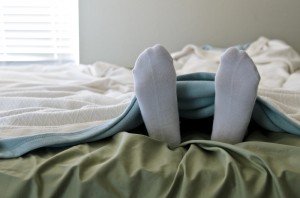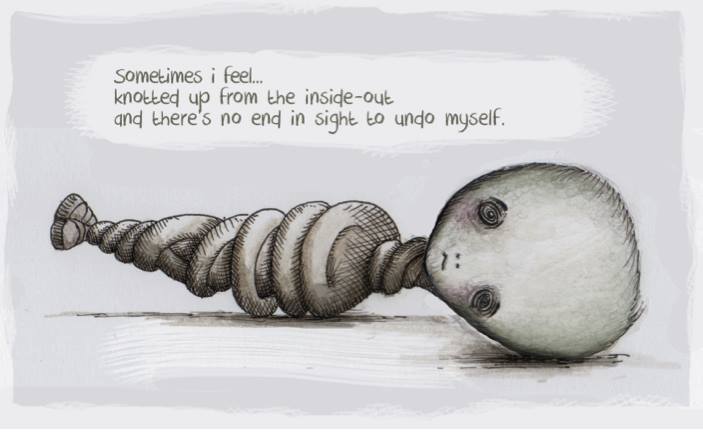
Research has found that people who are inpatients in acute mental health rehabilitation services often have low levels of activity, spending much of their time sleeping, eating or watching television.
It has been suggested that certain activities may help reduce the negative symptoms and social function that people with psychosis often experience, but there is very little reliable research in this area.
This recent RCT published in Lancet Psychiatry (Killaspy et al, 2014) used the GetREAL intervention (Cook et al, 2012) to enable change at an institutional level to increase inpatient involvement with a range of activities.
Methods
A survey covering 87% of inpatient rehabilitation services identified 64 poorer performing units, from which 40 were randomly selected for the study. The services were then cluster randomised, with 20 continuing their current practice (control group) and 20 receiving staff training as part of the GetREAL intervention (intervention group).
The GetREAL intervention was split into four stages:
- Predisposing stage – targeted at senior clinical and managerial staff to get their buy-in for the intervention.
- Enabling stage – the GetREAL team, comprising an occupational therapist, an activity worker and a patient expert, assessed current practice and resources. Based on this assessment the team facilitated a one-day training session for staff to increase patient engagement with activities. The GetREAL team provided support over five weeks, including co-facilitating workshops, attending team meetings to troubleshoot any implementation issues and running a half-day review workshop at the end of the five weeks.
- Reinforcing stage – a 12-month action plan was circulated to all staff and a dedicated link staff member kept in regular contact with the GetREAL team.
- Supervision and support – was offered throughout the process.

The GetREAL intervention encourages rehabilitation services to enable service users to extend and maintain their range of community activities during their inpatient stay.
Results
The demographics of the control and intervention group services and their patients were generally comparable at baseline and at 12 months’ follow up. Thirty-nine out of the 40 units were available for 12 months follow-up, with one unit having closed during that time.
This study did not show any clinical improvement as a result of the GetREAL intervention (coefficient 1·44, 95% CI -1.35 to 4.24). It was estimated that an increase of £101 cost per patient would be required to increase patients’ engagement by 1%.
The researchers offer some plausible explanations for why the intervention was not as effective as they had hoped:
- Few of the link staff made contact with the GetREAL team during the 12-month follow-up period, which may suggest that they did not continue with the GetREAL techniques
- The intervention incurred a cost and was implemented during a period of huge change in the NHS as a result of the worldwide economic crisis, so it may not have been fully implemented due to competing priorities
- The researchers also suggest that the level of functioning of patients in their sample may have been too severely impaired for them to benefit from the intervention, thus explaining why other studies had found the intervention more effective.

This study did not show any clinical improvement as a result of the GetREAL intervention.
Conclusions
The authors concluded:
Our training intervention did not increase patients’ engagement in activities after 12 months of follow-up. This failure could be attributable to inadequate implementation of the intervention, a high turnover of patients in the intervention units, competing priorities on staff time, high levels of patients’ morbidity, and ceiling effects because of the high quality of standard care delivered. Further studies are needed to identify interventions that can improve outcomes for people with severe and complex psychosis.
Summary
Although this study may not have shown the GetREAL intervention to be clinically effective, it highlights the important issue of activity engagement amongst inpatients in mental health units. It is necessary to find ways to increase inpatients’ engagement with activities and to address the structural and economic barriers to achieving that.
Quite simply (and with no criticism of hard-working staff) how can we expect people’s mental health to improve if they spend most of their time sleeping, eating or watching television!
Links
Killaspy H et al. (2014) Clinical effectiveness of a staff training intervention in mental health inpatient rehabilitation units designed to increase patients’ engagement in activities (the Rehabilitation Effectiveness for Activities for Life [REAL] study): single-blind, cluster-randomised controlled trial. The Lancet Psychiatry 2014 2 (1) 38-48. [Abstract]
Cook S, Hill C, Mundy T, Killaspy H, Holloway F, Craig T, Taylor D and Freeman L. (2012). GetREAL Intervention Manual. A staff training intervention for inpatient mental health rehabilitation units aimed at increasing patients’ engagement in activities (PDF). Manual. Sheffield, Faculty of Health & Wellbeing, Sheffield Hallam University and UCL Mental Health Sciences Unit, University College London.


Engaging inpatients with mental health rehabilitation activities http://t.co/s2Ko3rzYHa
Engaging inpatients with mental health rehabilitation activities: Elly O’Brien reports on a recent RCT of a st… http://t.co/1t0GrhUl3H
@Mental_Elf or not engaging them as the case may be!
“@Mental_Elf: Engaging inpatients with mental health rehabilitation activities http://t.co/6ZzXHCEOvu” more creative approaches needed?
Olivia Cialdi liked this on Facebook.
Carina Kirby liked this on Facebook.
“@Mental_Elf: Engaging inpatients with mental health rehabilitation activities http://t.co/4yW1hHlk1X” @UCLPsychiatry
@Mental_Elf actually published in @TheLancetPsych
@MarstonLouise Second time @Mental_Elf has confused @TheLancetPsych with @JAMAPsych! Taken as a compliment.
Ben Kinsey-Jones liked this on Facebook.
We’ve been Elfed!!! @Mental_Elf
Kirsten Corden liked this on Facebook.
The Mental Elf liked this on Facebook.
Today @ellyob reports on a recent RCT of a staff training intervention for inpatients in mental health rehabilitation http://t.co/rlQOWkknP9
Perfect “@Mental_Elf: Engaging inpatients with mental health rehabilitation activities http://t.co/2BM0ODomnr” #TherapeuticRecreation week
Engaging inpatients with #mentalhealth #rehabilitation activities http://t.co/z6zApyTPeA GetREAL reviewed by @Mental_Elf #occuptionaltherapy
Gregory D. Zed liked this on Facebook.
‘Sue Mario liked this on Facebook.
Ali Smith liked this on Facebook.
Lucy Riddett liked this on Facebook.
How can we support service users to maintain & extend community activities during mental health inpatient stays? http://t.co/rlQOWkknP9
Engaging inpatients with #mentalhealth rehabilitation activities http://t.co/oKscVE1hww
RCT finds no clinical improvement as a result of the GetREAL intervention http://t.co/rlQOWkknP9
Zoie Waddingham liked this on Facebook.
Schizophrenia – Mom’s Journey liked this on Facebook.
Don’t miss: Engaging inpatients with mental health rehabilitation activities http://t.co/rlQOWkknP9
“How can we expect people’s mental health to improve if they spend most of their time sleeping, eating or watching television!” @Mental_Elf
People who attend the mental health day centre I go to have just had their access hours cut from 4 days a week to 1 hour a week. @Mental_Elf
4 days a week to 1 hour a week. No RCT but seems a pretty good likelihood there’ll be more sleeping, eating & watching TV. @Mental_Elf
#Blog via @smexaminer: Engaging Inpatients With #Mental Health #Rehabilitation Activities http://t.co/ujmuZkj7Pa
Engaging inpatients with mental health rehabilitation activities http://t.co/dTAisI1onq via @sharethis